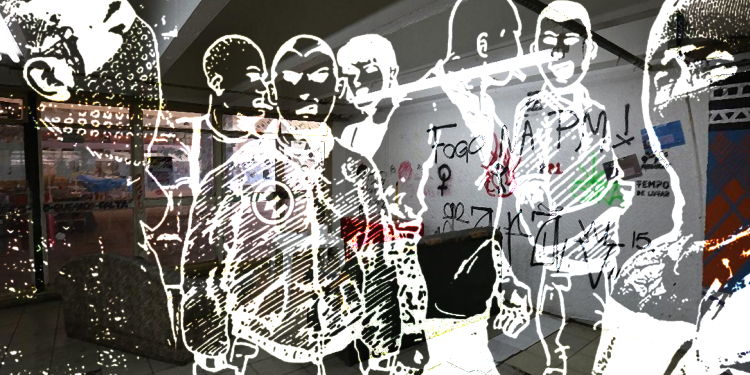NEWS CENTER – A subculture is a group of people within a cultural society that differs from the standard and conservative values to which it belongs, often retaining some of its founding principles. Subcultures develop their own norms and values around cultural, political, and sexual issues. Examples of subcultures include hippies, hipsters, goths, steampunks, bikers, punks, skinheads, gopnik, hip-hoppers, metalheads, cosplayers, otaku, furries, and more. The concept of subcultures was developed in sociology and cultural studies. Subcultures differ from countercultures – there is even constant confusion between both terms.
Within the reality of capitalist modernity, being ‘against’ this culture and its normativity is an anti-systemic form of expression, however, when this is reproduced only in appearances, it becomes an escape method for a deeper reflection on the subject and in a way that really generates a change in behavior and mentality that distances itself from the capitalist mentality (individualist, liberal, oppressive, sexist, positivist, etc.). Rêber APO, Abdullah Ocalan says:
The concept of being anti-system is quite problematic. First, does this opposition also mean being anti-civilization? What aspects does it include or exclude? How does she see the system’s relationship with modernity? Is it possible to build a new system out of the existing system without opposing the modernity of the system? How does this opposition view modernity? Were you able to identify its dual character? Do you have an understanding of alternative modernity? Failing to answer these questions leaves the concept of anti-system forces up in the air. It is difficult to develop a meaningful opposition to the system without projects for the future and a correct analysis of the past. To overcome these difficulties and arrive at possible answers to these questions, I based my analysis on the concepts of democratic civilization and democratic modernity. I think this is the correct method in the search for an alternative that does not fall into the previous vicious circles.
They mean capitalism when they talk about the system, not necessarily modernity as a whole. They differ particularly when it comes to industrialism and the nation-state, the other two dimensions of modernity. They are not clear when it comes to civilization. With their complicated views, they often take their places at opposite poles. It is not often that his future utopias go beyond modernity. In short, they are not trying to go beyond modernity, but to improve upon it. For most of them, modernity without capitalism would be enough, and they fail to understand that this is totally utopian.
When their mindsets and structures are examined, it is clear that they failed to genuinely overcome liberalism and modernity. Whether they are on the extreme left or the extreme right of the liberal spectrum, liberalism ends up integrating them. Whether or not they are incorporated into capitalist monopolies depends on their understanding of modernity. Postmodern, radical religious, feminist, and ecological movements are new movements that have emerged in response to these developments. Their current ideological and practical positions make it doubtful that they are as effective as former opponents of the system, which is why neoliberalism and radical religiosity can be somewhat influential. So what we need is a radical intellectual, moral and political renewal of opposition to the system. In this context, it is important, necessary, and useful to familiarize ourselves with the history of antisystem forces.
Within the ‘revolutionary’ organizations of the ‘radical’ left, the semblances of the subculture and counter-system become evident in occupations, cultural demonstrations, protests and so on. However, it is important to reflect on how much this really dialogues with the society which these same movements claim to fight to change or build something new. A meeting place, a squat, a base workplace, meetings, etc., which has a degraded appearance and aesthetics, will not dialogue with society. The idea is just the opposite, that it is a place where these individuals feel comfortable, instead of being a place where an alternative is built with society.
As long as individuals and movements continue to insist on this ‘counterculture’ stance, with this ‘shock’, ‘annoy’ stance, little progress will actually be made in building anything. Especially because these demonstrations are not properly related to pixo culture, which is a popular representation of criticism of capitalist and elite aesthetics. It is possible to observe with the practices of other movements and organizations which have a stance against capitalist modernity, but even so, centered on revolutionary ethics and aesthetics – we can mention here the PKK and its cadres, the same for the Zapatistas, even the MST (Brazil) and its camps maintain an aesthetic and posture that must be observed. This posture is often pointed out as dogmatism by more ‘radical’ groups, but at the end of the day, who is really building something with society? Yes, society is sick with the capitalist cancer and its system, but pointing out the problem and isolating oneself in political and local friend groups that become an escape for this system are not enough to change this reality and rescue society from the evils of capitalist modernity. The experience in Hambach Forest and ZAD can serve as practical examples for this.
Understanding the difference between society and civilization is the first and main step towards this change. We were raised within the system, we have much of its mentality built into us. Rêbertî says “80% of the enemy is within us”, this could not be more accurate. I find it incredibly unique how this movement makes deep analyzes about ourselves, our relationship in society, with nature and so on. To be able to talk about revolution, to be able to call ourselves revolutionaries one day, we first need to revolutionize ourselves! This is the only way to truly live free from the capitalist system and its mentality, which enslaves people to a level of submission never seen before.




